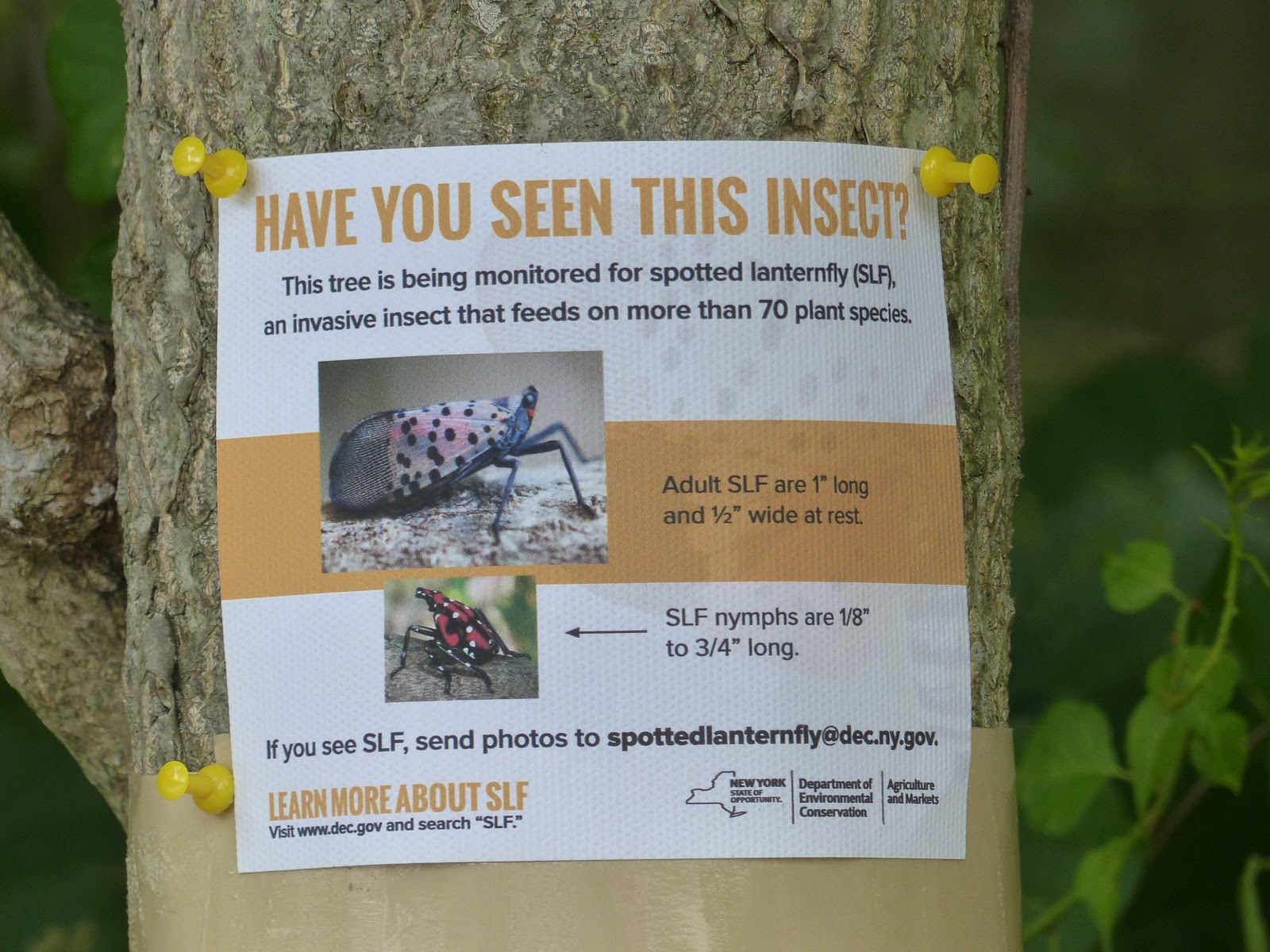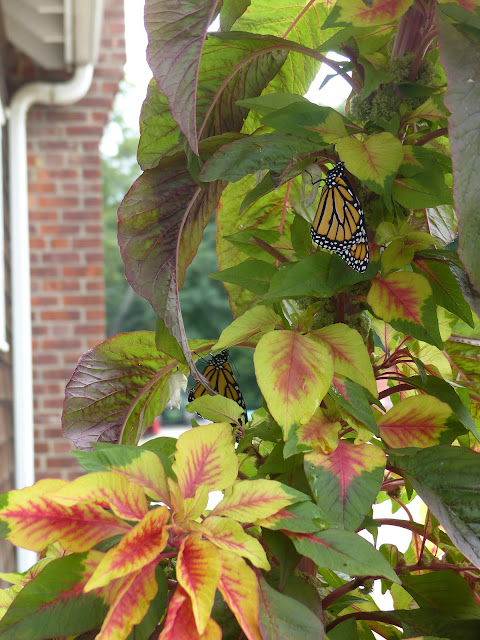What You Need to Know About This Invasive Species -Spotted Lanternfly

Four years ago, a colorful but invasive organism made its way into Pennsylvania from Asia, and has thus, become a topic of concern among the science and ecotourism community. For those of you not yet familiar, the insect is Lycorma delicatula , most commonly referred to as the spotted lanternfly (SLF). According to the Department of Environmental Conservation (DEC), while not currently a strong presence in our state, this insect has already made its way into New Jersey, Virginia, and Delaware. With that in mind, scientists and park officials do want to err on the side of caution to limit this invasive species' dispersal and educate the public-- Lets start now! What makes SLF destructive? Spotted lanternfly is a sap-sucking planthopper. It feeds on tree phloem; t his is the vascular tissue that enables trees' to transport its sugars. In doing so, SLF can alter tree immunity and make it vulnerable to other insect attacks or diseases. Besides that, there are ot


